The 737 MAX Situation –
Laying Bare Another Global Safety Issue
Probably by the end of this week, the situation with the 737 MAX will be clarified, and barring any political shenanigans, it’s in Boeing’s court to revise whatever systems need to be addressed so that the airliners can return to the skies.
However, this entire event has illuminated another potential global safety issue that affects the air transportation system outside of the United States…
Grabbing A Politically-Incorrect – But Accurate – Third Rail…
Although the usual-suspect cognoscenti sneered at it, President Trump’s comment/observation that we may be building airplanes that pilots don’t know how to fly is accurate.
Not for US airlines, certainly, as forcefully put into the forum of discussion by the labor organizations representing pilots and technicians. We are safe, with the standards and the quality of the people at America’s airlines.
But when carriers like Ethiopian are finding it necessary to staff cockpits of sophisticated and technologically-demanding airliners with pilots holding only 200 hours of flight time, the President’s observation is on the money.
It begs the question whether the same levels of relative experience are present in other areas of operations. Like, maintenance, where it’s no longer a matter of just turning wrenches, and a lot more training is needed to support fleets.
This means one of two things – either airliners need to be designed to need less experience in the cockpit and in the maintenance hangar (which is an absurd direction), or the airlines buying these machines need to assure that they have the expertise to operate them.
Carriers from any part of the globe wanting new airplanes can arrange the financing or lease deal, take delivery, and fly the planes home from the factory… but whether they have the management expertise, maintenance & training support and pilot resources to operate them, well, Boeing or Airbus can’t control that.
The revelation that Ethiopian is putting amazingly low-time pilots in the right seat would point to the second conclusion – it’s the operators that are the weak link in the safety chain.
The question not being pursued is that this tragedy has illuminated another potential safety issue… the planned growth of national carriers at smaller nations also raises questions regarding the qualification levels that may be in place in those regions.
There is the appearance of a safety hole – one that up until now hasn’t been pursued.
Moving On In The MAX Arena…
Potential 737 Order Cancellations. Aside from the 202 737s on order at Lion Air, there are not likely to be any long-term effects on the 737 backlog. Not real pleasant for Boeing – at current production rates, this equates to the equivalent of almost four months of production.
But the Lion Air order has been in question since the crash of that carrier’s MAX airliner last fall. Lion Air also has over 200 A-320 platform units on order.
Long-Term Affects on US Air Service. As it stands today, there are no long-term downsides apparent for US airports due to this situation. This is based on the assumption that there will be resolution within four to six weeks and then 737 deliveries restart.
However, in the (hopefully) unlikely event that 737 deliveries are delayed for several months, there would be some restructuring of air service patterns.
But don’t make book on this potentiality.
There Are No Other Airframe Manufacturer Options. Some speculation has been made that China’s near-immediate grounding of 737 MAXs was part of a plan to get more orders for its indigenous C919 narrow-body airliner.
Not likely – the C919 has years to go before it’s ready for global prime time. It’s years from being in full production, let alone being honed to meet performance specs to match 737s and A-320 platforms. The chance of an airline in the US or the EU switching to a C919 order makes lottery odds look like a sure-thing.
Point: For new airliners, Airbus and Boeing are the only games in town, and Airbus doesn’t have the production capacity to take on a majority of the current Boeing demand. Embraer’s commercial airliner program has been acquired by Boeing. The huge potential for Bombardier to break into the narrow-body market ended with the Airbus acquisition of the CSeries program.
Also – missed by a lot of veneer “experts” – it’s a real challenge for a Boeing operator to just shift into Airbus operation… and costly.
Again, it’s likely that the smoke will clear by the end of the week – certainly the next 2 weeks.
________________________-
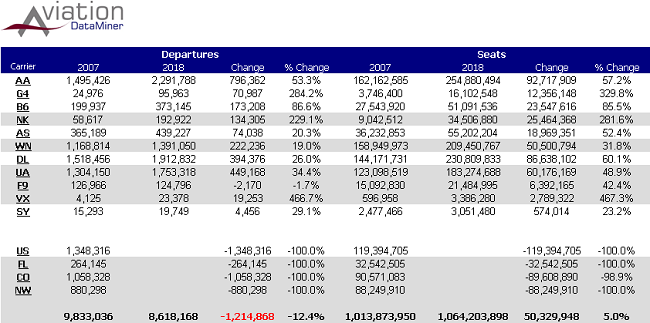


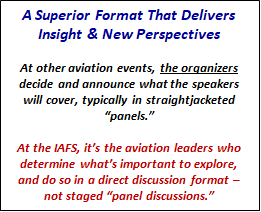 Take a look at other industry events – they all are based on discussions restricted to subjects that the organizers somehow deem to be pertinent, and in stone months before the event itself. By he time the conference comes about, the whole subject may be history.
Take a look at other industry events – they all are based on discussions restricted to subjects that the organizers somehow deem to be pertinent, and in stone months before the event itself. By he time the conference comes about, the whole subject may be history.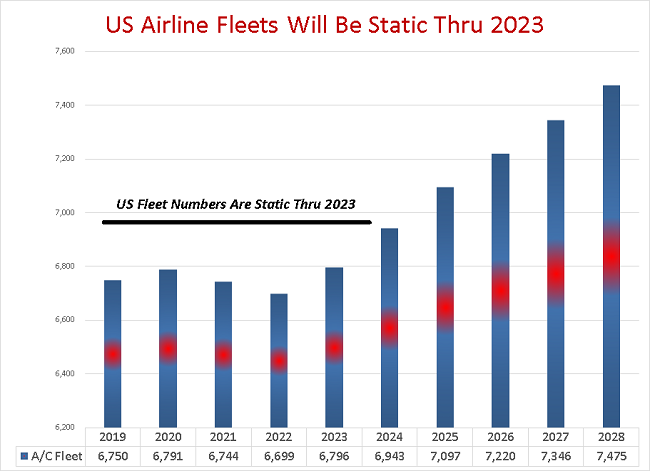
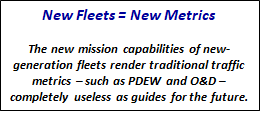 On the periphery of all this, used A-319s are actually in demand… because of low lease costs, United has brought in fleets of them as they come off lease at other carriers. American, too… a number that have come off-lease at Frontier are headed for AA. But they are units that can be quickly and cost-efficiently retired as newer aircraft come on line. When a C-check comes up, a decision can be made to park the unit, or go ahead and keep it for a couple more years.
On the periphery of all this, used A-319s are actually in demand… because of low lease costs, United has brought in fleets of them as they come off lease at other carriers. American, too… a number that have come off-lease at Frontier are headed for AA. But they are units that can be quickly and cost-efficiently retired as newer aircraft come on line. When a C-check comes up, a decision can be made to park the unit, or go ahead and keep it for a couple more years.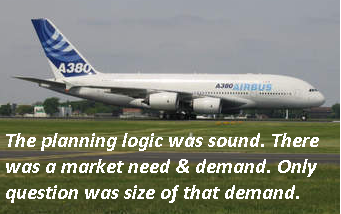 Back then, BGI opined that while this was valid, the -380 would have limited multi-mission capability, and would face a situation where its utilization would be highly restricted, precisely due to its size and need to be operated only in very high-density markets.
Back then, BGI opined that while this was valid, the -380 would have limited multi-mission capability, and would face a situation where its utilization would be highly restricted, precisely due to its size and need to be operated only in very high-density markets. Ambient thinking and political correctness will not be there. Exploring new ideas and concepts will be the focus.Also not in attendance will be federal officials repeating the same party line that’s delivered at other events. Instead, the IAFS™ tackles the future, directly with the executives shaping it.
Ambient thinking and political correctness will not be there. Exploring new ideas and concepts will be the focus.Also not in attendance will be federal officials repeating the same party line that’s delivered at other events. Instead, the IAFS™ tackles the future, directly with the executives shaping it.
 For example, a decision by an aircraft manufacturer in regard to a new aircraft will affect all sectors – from finance to airport facility planning. An airline deciding to shift fleets can affect things from capacity planning to ground equipment requirements.
For example, a decision by an aircraft manufacturer in regard to a new aircraft will affect all sectors – from finance to airport facility planning. An airline deciding to shift fleets can affect things from capacity planning to ground equipment requirements.